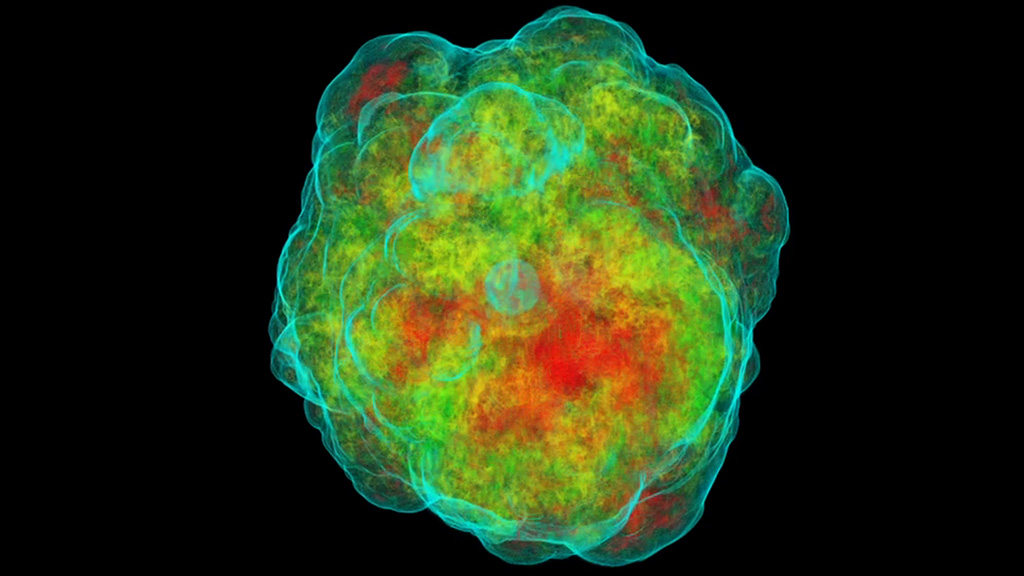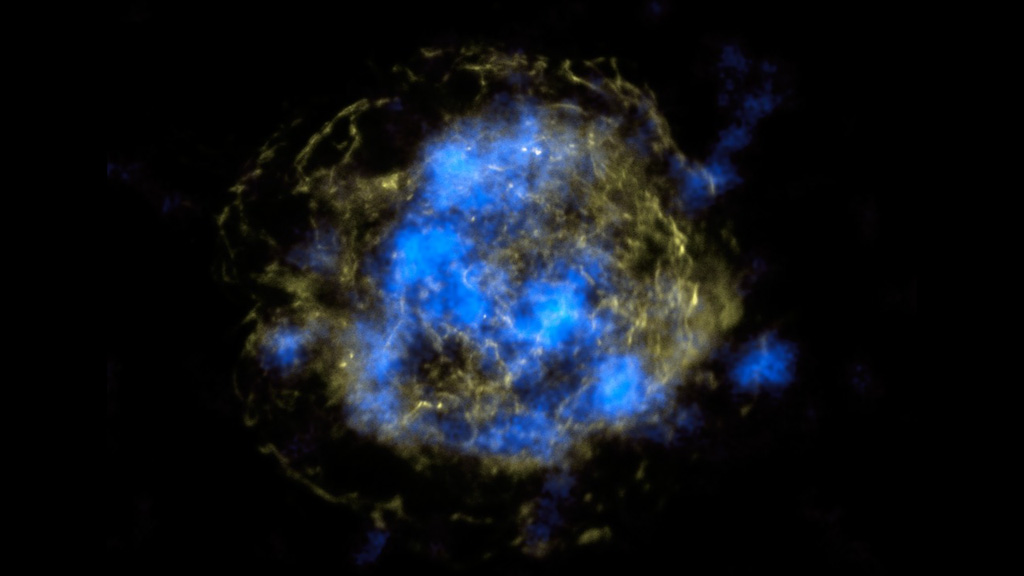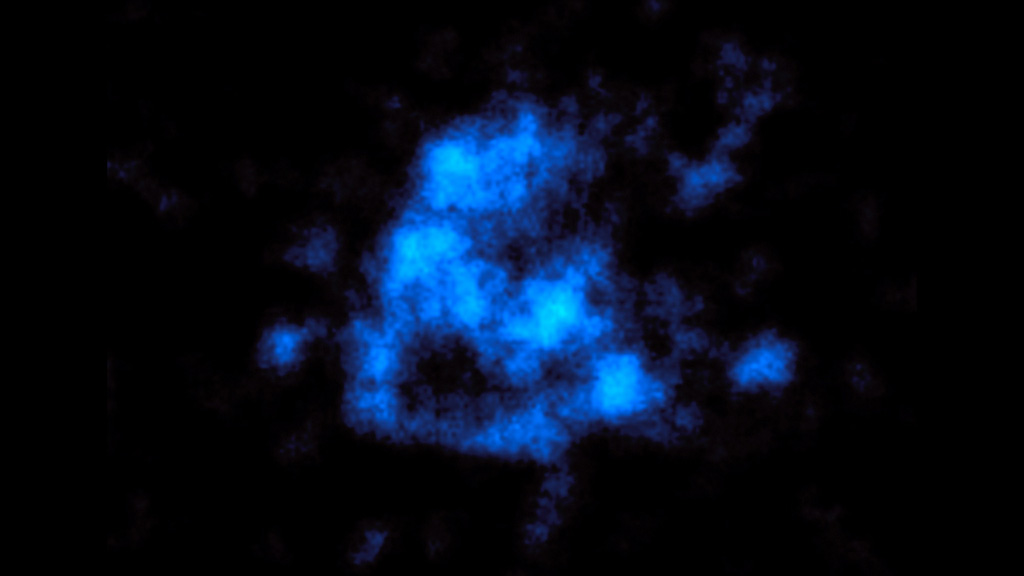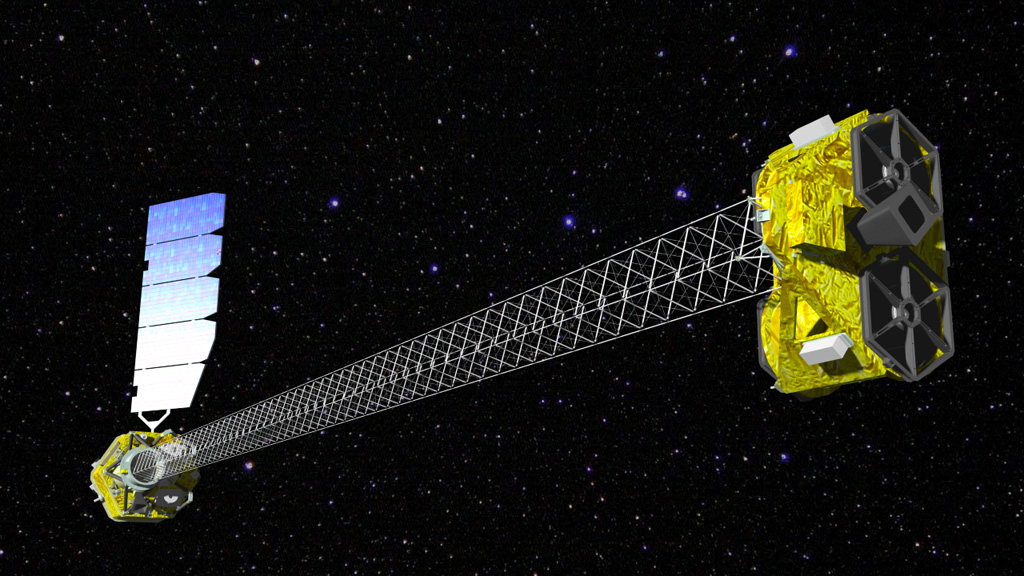Universe
ID: 11735

Cassiopeia A used to be a bright, shining star like our sun. Now, all that remains after the star’s violent explosion, called a supernova, is just a gassy shell. Because it burst only around 330 years ago—a blink of an eye in cosmic time—this supernova remnant is helping researchers understand how massive stars die. To unravel the story of Cassiopeia A’s demise, astronomers turned to NASA's Nuclear Spectroscopic Telescope Array, or NuSTAR, spacecraft. An imager aboard the spacecraft can detect high-energy X-rays emitted by radioactive isotopes produced during a star's collapse. The distribution of these X-rays observed around Cassiopeia A suggests supernova explosions are a messy business: As a star collapses in on itself, bubbles of hot gas slosh out from the core in uneven shock waves, resulting in a big, blobby eruption. Watch the video to see a 3-D computer simulation of a supernova explosion.



Sloshing Supernova




Story Credits
Lead Visualizer/Animator:
Christian Ott (CalTech)
Lead Scientist:
Brian Grefenstette (Caltech)
Lead Writer:
Kerry Klein (USRA)
Christian Ott (CalTech)
Lead Scientist:
Brian Grefenstette (Caltech)
Lead Writer:
Kerry Klein (USRA)
Please give credit for this item to:
NASA's Goddard Space Flight Center
Video and images courtesy of NASA/JPL-Caltech
NASA's Goddard Space Flight Center
Video and images courtesy of NASA/JPL-Caltech
Short URL to share this page:
https://svs.gsfc.nasa.gov/11735
Keywords:
SVS >> App
NASA Science >> Universe
https://svs.gsfc.nasa.gov/11735
Keywords:
SVS >> App
NASA Science >> Universe







